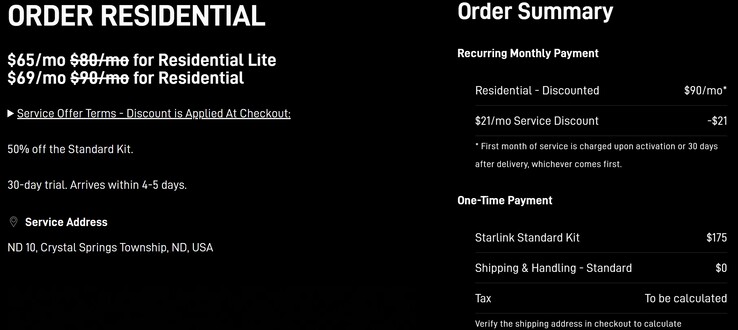Starlink is lowering its monthly service fee down to $69 for the Residential plan and down to $65 for the Lite subscription that offers a slower typical download speed of between 45 and 130 Mbps.
These prices are available to new Starlink subscribers, who are largely situated in US states where the Residential Lite plan is available, too. These span from Texas to North Dakota, and from Maine to Oregon, but are mostly situated in the Western parts of the country. Save for states like Washington, of course, where Starlink has so many subscribers already, that it now manages demand by introducing congestion fees of up to $1,000 for a single line of service.
While Starlink advertises a discount of its regular $120/month service fee for the Residential plan down to $99/month, and a cut for the Lite plan from $80 to $65/month, in certain areas the Residential plan was already discounted down to $90.
In such states, the monthly Starlink subscription fee drops down to $69/month even, as can be seen from the North Dakota example below, which is rather unprecedented. In most other service areas that are subject to the discount, however, the new Residential plan fee will be $99/month.
The Starlink monthly price cut promo is valid for new customers and for a single satellite Internet line in the span of a year. It stops if they go to another plan type or lose their service for some reason, whether due to cancellation or suspension, and reverts back to the original monthly fee for the area in a year.
Besides the monthly subscription fee cut, Starlink is lowering the price of the Standard dish by the whopping 50%, too, from an already lowered original price. While the Starlink Mini dish is currently discounted on Amazon from its $499 price, the Standard Kit can be had for just $175 nationwide, marking the largest difference in the official prices of the Mini and Standard dish ever.
Starlink does say that the Standard Kit discount is available for a limited time, but hasn't specified the duration of the promo. It might be present until Starlink determines that it has amassed enough new subsciribers to fill its additional 5 Tbps capacity added every week by launching new satellites.



















